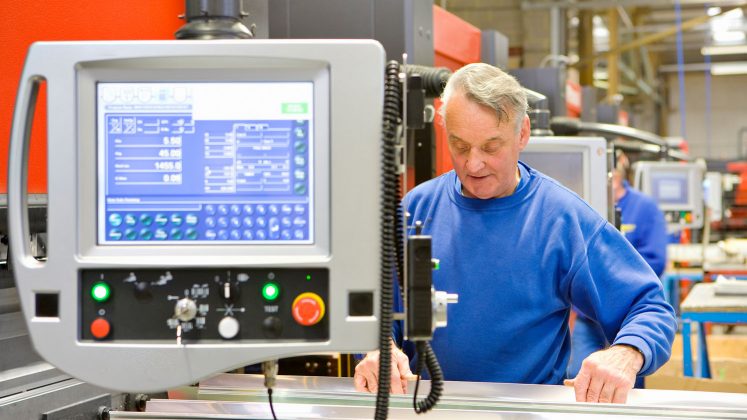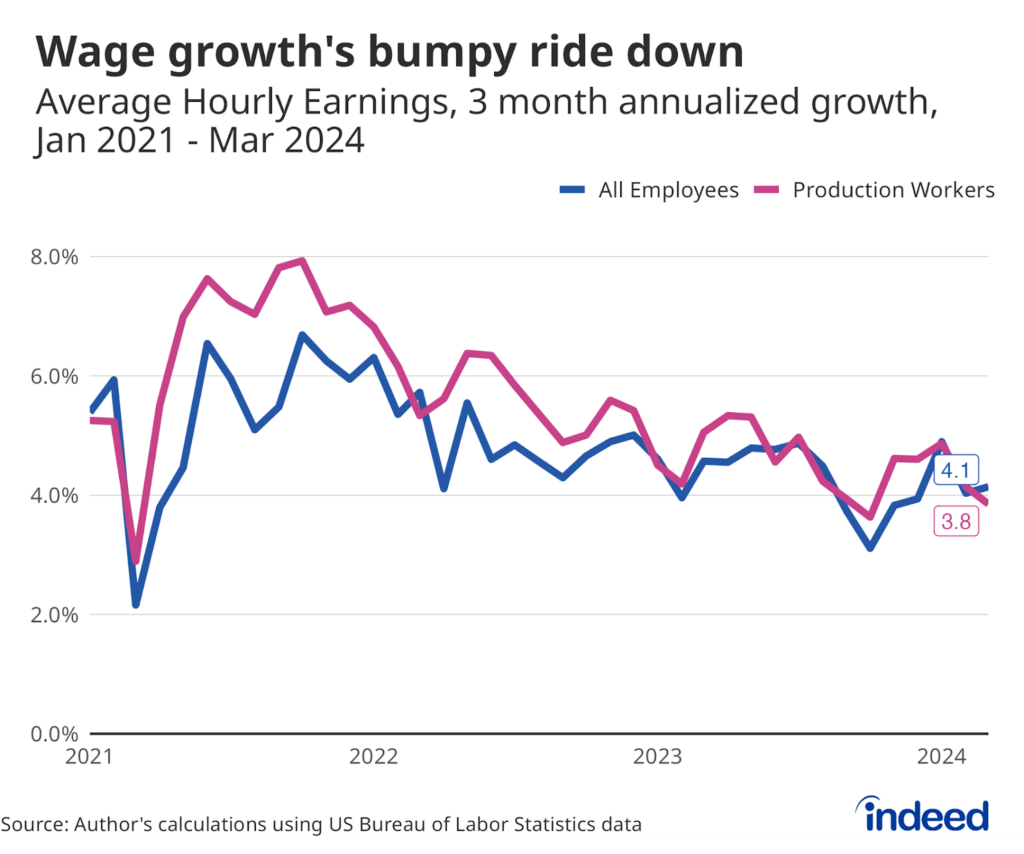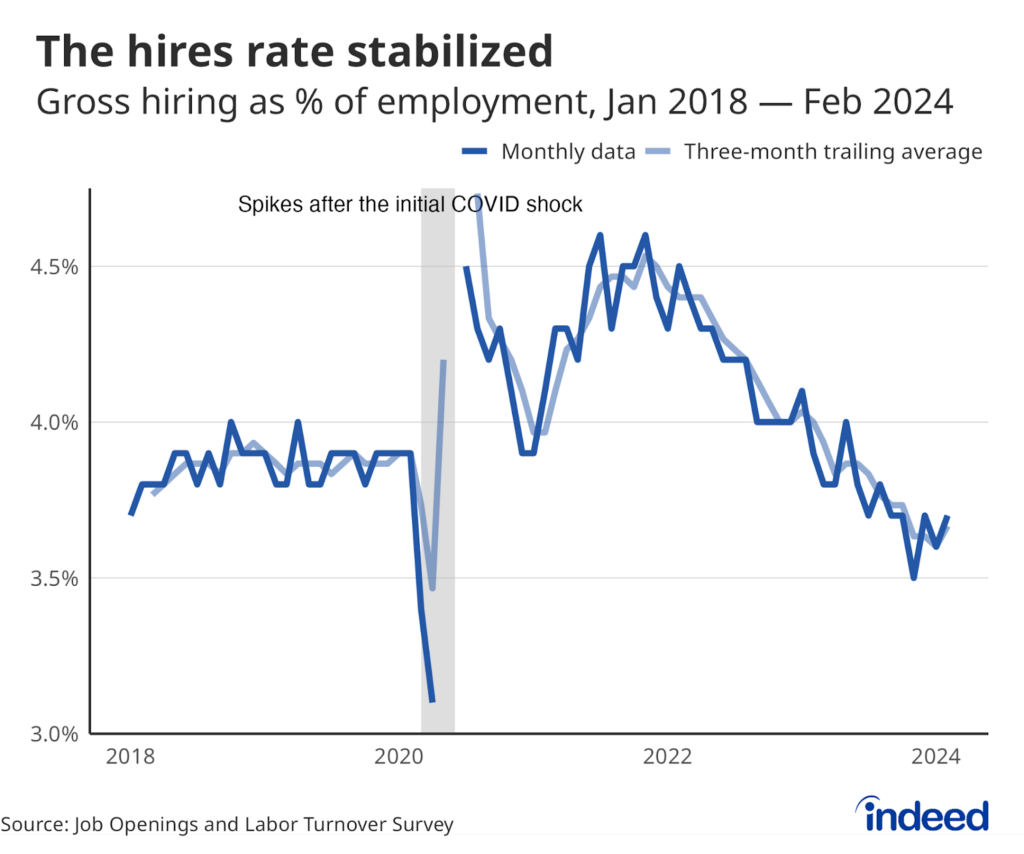Today, a debate rages over the severity with which automation, or “the rise of the robots,” will impact our society.
According to one study, nearly half of our jobs could be made obsolete by automation but others are quick to point out that a fear of job-destroying technology is nothing new. It is true that, in the past, technological advances have often ended up creating more jobs than they destroyed — and it’s possible this will happen again. In the short run, though, automation is diminishing the need for many middle-skill jobs, leading us to a labor market polarized between high- and low-skill occupations.
These disappearing jobs are characterized by routine and repetitive tasks, while the high-and low-skill jobs least impacted by automation consist of non-routine tasks not easily replicated by a machine. Broadly speaking, management, professional and service occupations fall into the non-routine category while sales, administrative, construction, transportation, production and repair occupations are considered routine. Analysis from the St. Louis Federal Reserve found that employment in routine occupations flatlined in the early 90s, while employment in non-routine occupations has increased by more than 50%. In other words, the process of job destruction by automation has long since been underway.
As this process advances, those employed in routine occupations will likely be the most impacted by automation. By analyzing interest in routine occupation postings on Indeed we can identify the job seekers who may be putting themselves at risk of premature career obsolescence. In this post, we explore the question from a generational perspective: Who is most interested in these jobs — baby boomers (53-71 years old), who are about to leave the workforce, Gen Xers (37-52 years old), or millennials (20-36 years old), who will have to spend the most time in a workplace transformed by this technology?
Age is but a number in the eyes of a robot
First, we investigated the share of interest each generation was sending to routine work and found that the different generations show strikingly similar patterns of job search behavior.
Baby boomers show the most interest in routine work but millennials and Generation Xers are only one and two percentage points behind, respectively.
This uniformity of interest across the generations tells us that job seekers of all ages are interested in jobs whose functions are more susceptible to automation. The boomers that grew up in a world where manufacturing was king are just slightly more likely than millennials, many of whom have never seen the inside of a factory, to click on a job posting with primarily routine functions as millennials.
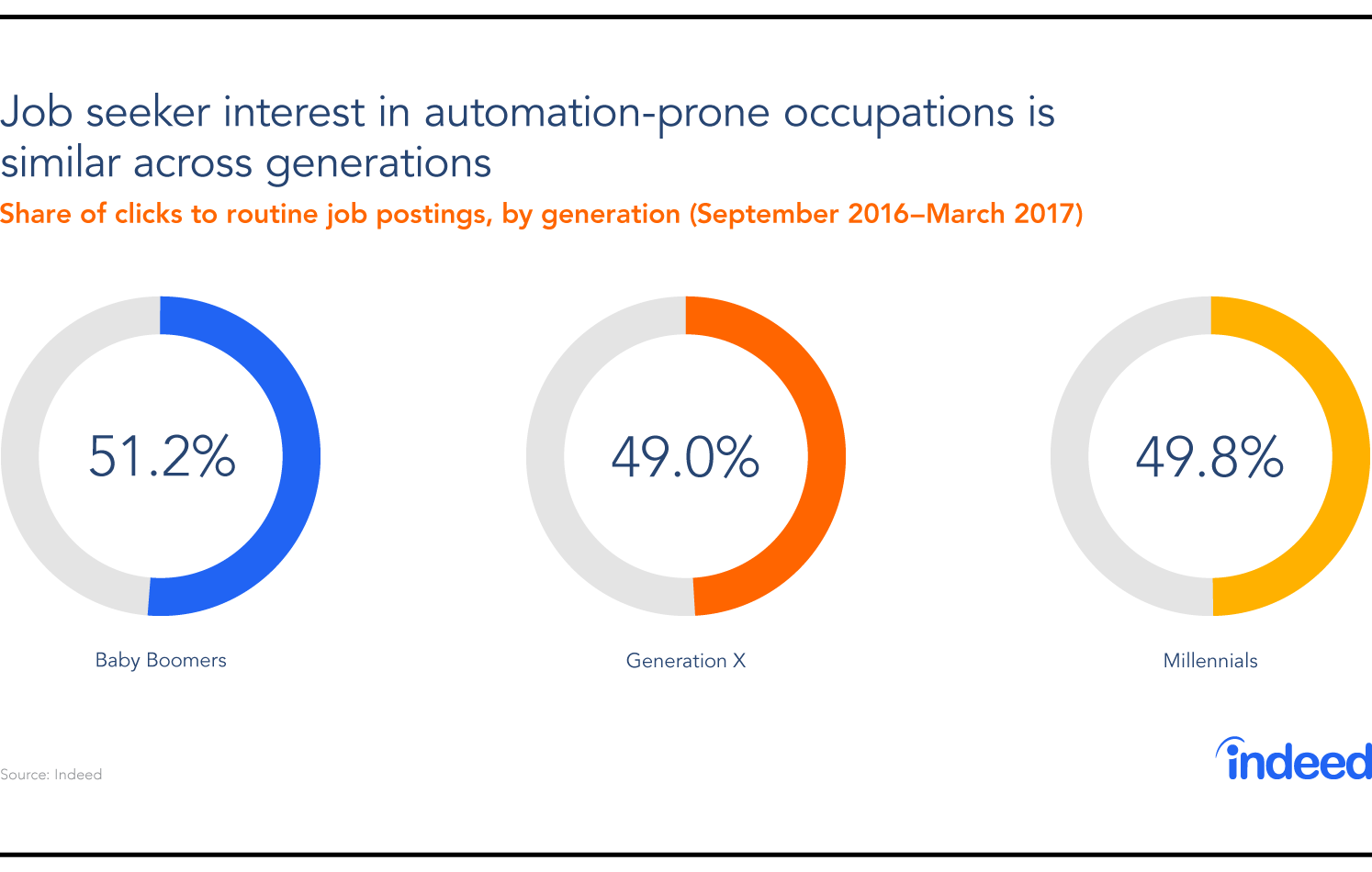
However, breaking down routine and non-routine occupations based on whether they primarily involve cognitive or manual skills reveals some interesting generational differences.
Telemarketers and truck drivers are both routine occupations, but the former relies mostly on cognitive skills while the latter relies more on manual skills. While both routine cognitive and routine manual jobs have functions that could be automated, understanding generational differences along these lines is still useful, because employment projections for cognitive and manual occupations differ quite dramatically.
While all three generations send the majority of their interest to non-routine cognitive jobs (composed of management and professional occupations) and the least amount of interest to non-routine manual jobs (composed of construction, transportation, production and repair occupations), there are some noteworthy differences.
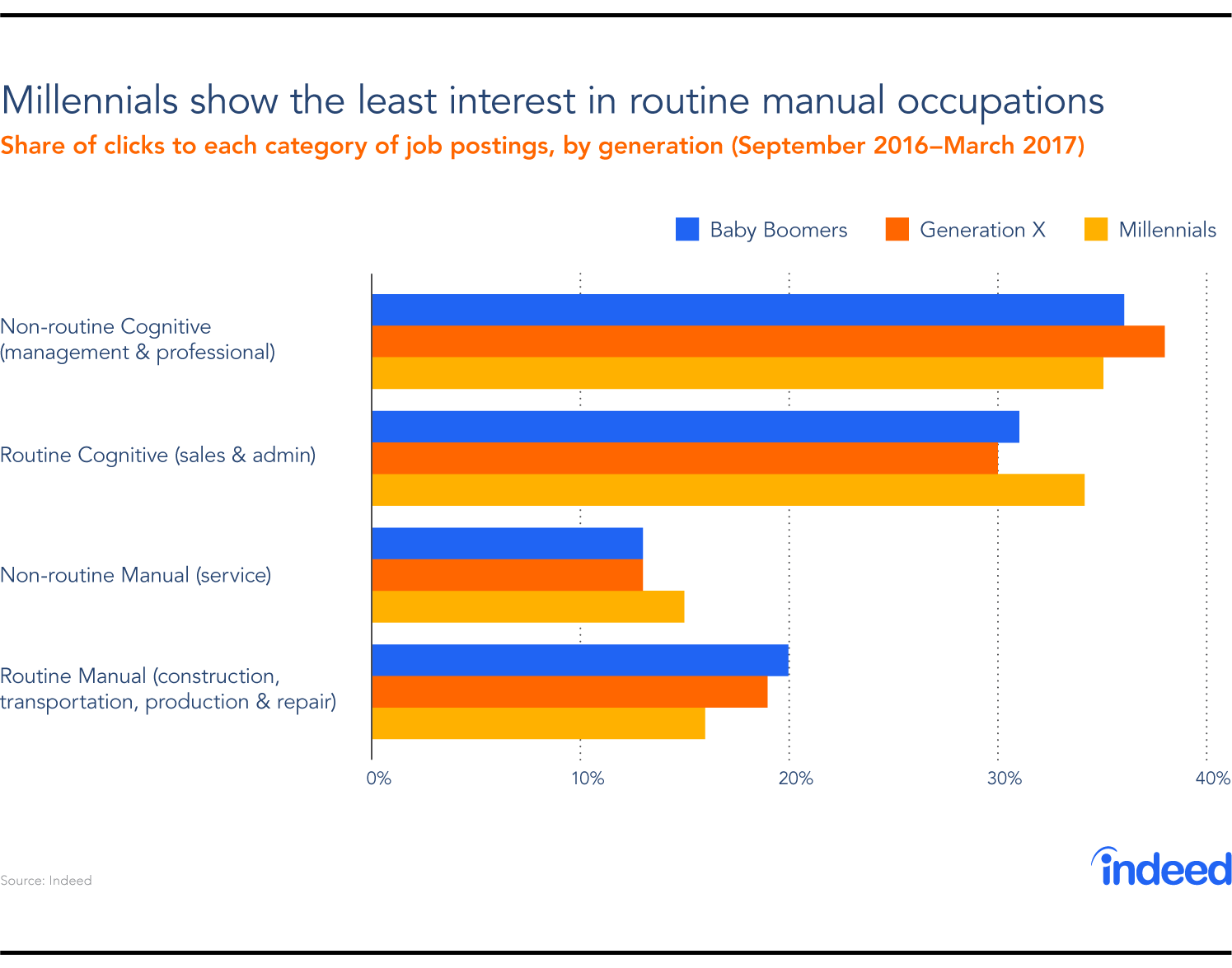
The older generations are clearly more interested in routine manual occupations — millennials send only 15.7% of their interest to these jobs, compared to 18.9% and 20% from Gen Xers and boomers, respectively.
Meanwhile, millennials show the most interest in routine cognitive and non-routine manual occupations. Many jobs in these groups don’t require many years of experience — think administrative assistants or bartenders — which could help explain why millennials, who tend to be at an earlier stage in their careers, are more likely to click on these jobs.
Gen Xers are the generation most interested in non-routine cognitive occupations, which happens to be thelargest and fastest growing occupation grouping, boding well for Generation X.
Occupations receiving the most (and least) interest from the generations
To get a clearer picture of how occupational preferences differ between the generations, it is helpful to view their job search activity segmented out by major occupation categories. The chart below shows how click activity by generation in each occupation varies from the generational breakdown in click activity for all jobs.
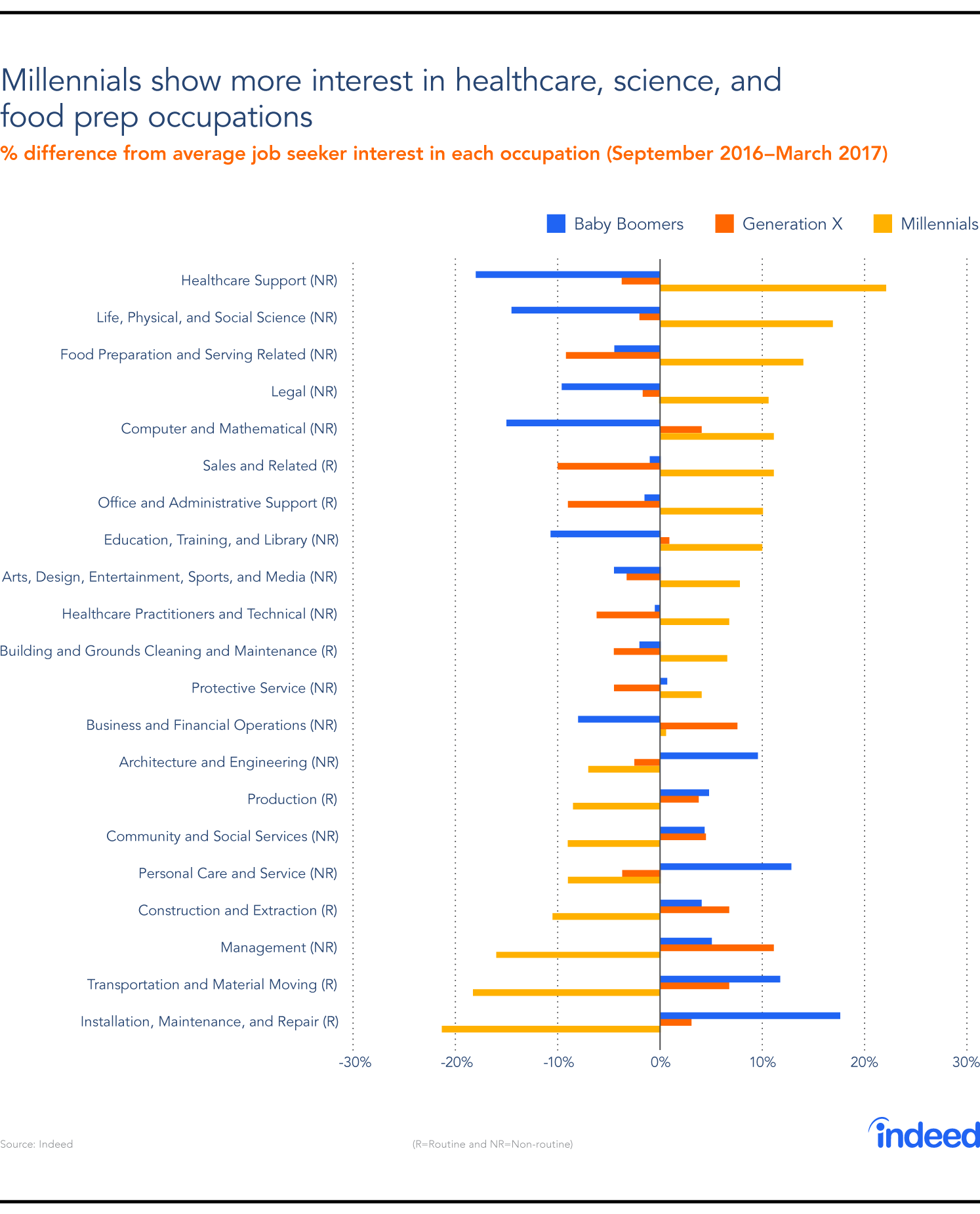
The top five occupations for interest from millennials are all non-routine occupations that would be difficult to automate. Healthcare support occupations receive an outsized share of interest from millennials, who are 21.9% more interested in this occupation than all job seekers. Interestingly, this occupation is expected to grow by 23% from 2014 to 2024, making this a good choice for those just beginning their careers.
Generation X shows slightly more interest in management and business occupations. This aligns with the earlier finding that they send the largest share of interest to non-routine cognitive occupations, and also reflects that this generation has the requisite work experience for these management roles.
Meanwhile, three of the five occupations receiving relatively more interest from boomers are routine manual occupations, in which many jobs and specific tasks have already been displaced by technological advances: Installation maintenance and repair, transportation and material moving, and production occupations.
On the one hand, it’s promising that the generation showing the most interest in these ‘disappearing’ occupations is the one currently ageing out of the workforce. However, it’s more difficult for boomers to retrain and switch career paths than it is for the younger generations because they’ve invested more time in their current occupations and have less time to reap the benefits of new training. So when boomers’ jobs are automated, they’re more likely to retire. However, speeding up retirement for boomers would likely hurt the economy as fewer workers means less economic growth.
Another occupation receiving an outsized share of interest from boomers — personal care and service —is projected to hit twice the rate of average occupation growth. While attempts to automate some caregiver functions have been made (for instance, the use of robot seals to aid with loneliness in Japan) this occupation is not likely to suffer major losses anytime soon. As more boomers retire, not only is the interested pool of job seekers shrinking but the demand for these types of services will be rising, so employers in this field will need to appeal to the younger generations.
Paths to the future
Automation is a process, not a single event, and technological progress is going to impact different occupations at different times. While each of the generations sends about half of their interest to routine jobs, precisely which specific occupations are receiving this interest differs across the generations. Millennials are likely to feel the effects of automation at a different time than Gen Xers.
Disappearing jobs can be a frightening concept and it’s impossible to know exactly what jobs are ‘safe’ but workers can prepare themselves by building up transferable, non-routine skills that can be applied to a wide array of occupations.
Methodology
This analysis is based on six months of Indeed job seeker activity, from September 2016 to March 2017. Job seeker interest is measured as the volume of clicks to job postings in each occupation group as a share of clicks to all job postings. Indeed job postings are organized into their relevant US Bureau of Labor Statistics’ Standard Occupational Classification (SOC) category. The SOCs are then grouped in the following categories based on their primary job functions: non-routine cognitive, non-routine manual, routine cognitive, and routine manual, as has been done in previous research. Job seeker age is estimated based on resume characteristics and categorized into the relevant generation, using Pew Research Center definitions: millennials (ages 20-36 in 2017), Generation Xers (ages 37-52 in 2017) and baby boomers (ages 53-71 in 2017).
| non-routine cognitive | non-routine manual | routine cognitive | routine manual |
|---|---|---|---|
| 11 – Management Occupations | 33 – Protective Service Occupations | 41 – Sales and Related Occupations | 51 – Production Occupations |
| 13 – Business and Financial Operations Occupations | 35 – Food Preparation and Serving Related Occupations | 43 – Office and Administrative Support Occupations | 53 – Transportation and Material Moving Occupations |
| 15 – Computer and Mathematical Occupations | 39 – Personal Care and Service Occupations | 47 – Construction and Extraction Occupations | |
| 17 – Architecture and Engineering Occupations | 21 – Community and Social Services Occupations | 49 – Installation, Maintenance, and Repair Occupations | |
| 19 – Life, Physical, and Social Science Occupations | 31 – Healthcare Support Occupations | 37 – Building and Grounds Cleaning and Maintenance Occupations | |
| 23 – Legal Occupations | |||
| 25 – Education, Training, and Library Occupations | |||
| 29 – Healthcare Practitioners and Technical Occupations | |||
| 27 – Arts, Design, Entertainment, Sports, and Media Occupations |
